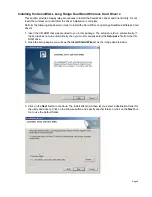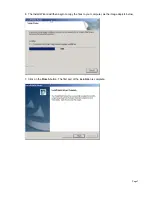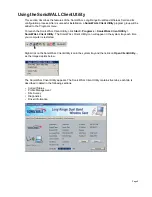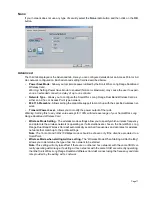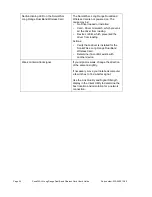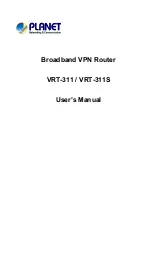
Page 13
WPA-EAP
WPA (Wi-Fi Protected Access) was designed to improve upon the security features of WEP (Wired
Equivalent Privacy). WPA provides improved data encryption through the Temporal Key Integrity Protocol
(TKIP), which scrambles the keys using a hashing algorithm and by adding an integrity-checking feature
to ensure that the keys have not been tampered.
EAP (Extensible Authentication Protocol) is an extension to the PPP protocol that enables a variety of
authentication protocols to be used. It passes through the exchange of authentication messages, allowing
the authentication software stored in a server to interact with its counterpart in the client.
If your network uses
WPA-EAP,
select that radio button. You must then select an
EAP
type from the drop-
down list. The two options available are: TLS and PEAP.
Before you enable WPA-EAP type TLS or PEAP authentication, your network devices must meet the
following requirements:
•
You must have a valid Windows username and password, and the password cannot be blank.
•
The appropriate certificate must be installed on your computer. TLS requires both a Certificate Au-
thority (CA) certificate and a user certificate. PEAP requires only a CA certificate.
WPA-EAP Using TLS
TLS
(Transport Layer Security) is an IETF standardized authentication protocol that uses PKI (Public Key
Infrastructure) certificate-based authentication of both the client and authentication server.
Select
TLS
from the drop-down list, and then click on the
Configure
button. The SonicWALL Client Utility
will then search your computer for any certificates. If you do not have any certificates, you will see the
following message, requiring you to select another WPA-EAP option.
Click on the
OK
button.






